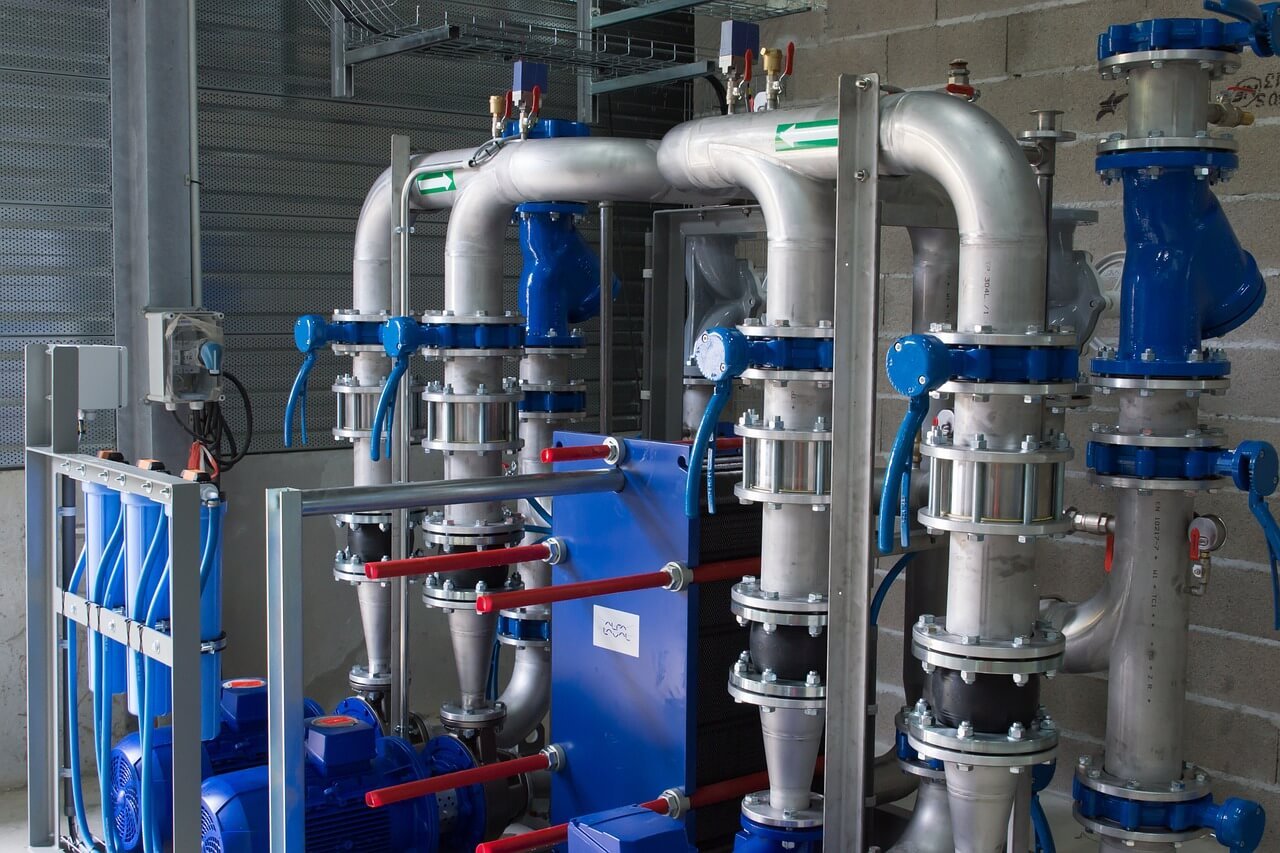Compressed air is an essential utility in many industrial and commercial operations. It powers a wide variety of equipment, ranging from pneumatic tools to automated systems and machinery. However, compressed air is also one of the most expensive forms of energy in industrial settings due to the high cost of generation and the challenges of maintaining efficiency. A key factor that leads to unnecessary waste in compressed air systems is leaks. Even a small leak can lead to significant energy losses, increased operational costs, and potential equipment damage.
This article will explore the importance of compressed air leak detection, the impacts of leaks on system performance, and best practices for preventing and detecting these leaks. By implementing these practices, businesses can reduce waste, lower energy consumption, and improve the overall efficiency of their compressed air systems.
The Importance of Compressed Air Systems
Compressed air systems are often considered the “fourth utility” in many industries, alongside electricity, water, and gas. They serve a wide range of applications, from powering machinery in manufacturing plants to controlling valves in processing plants. Given their critical role, it’s essential to ensure that compressed air systems are operating at peak efficiency.
However, compressed air systems are prone to inefficiencies, especially when leaks are present. Unlike electricity or water, which can be measured directly, compressed air is invisible and can easily go undetected when it escapes through a hole or crack in the system. The result is a significant waste of energy, increased operational costs, and decreased productivity. Detecting and fixing air leaks is a critical step in maintaining an efficient and cost-effective compressed air system.
The Cost of Air Leaks
According to the U.S. Department of Energy (DOE), leaks account for approximately 20 to 30% of the total energy usage in compressed air systems. This means that a system that operates at 100 CFM (cubic feet per minute) could lose up to 30 CFM through leaks alone. Even small leaks that seem insignificant can add up over time, resulting in substantial energy costs.
The financial impact of leaks goes beyond just wasted energy. Leaks can also lead to:
- Increased compressor load: When air leaks occur, compressors have to work harder to maintain the desired pressure, which can lead to wear and tear on the compressor and other components.
- Reduced system efficiency: Even a slight decrease in air pressure due to leaks can cause machinery and equipment to perform less efficiently, resulting in longer cycle times, lower productivity, and higher operational costs.
- Premature equipment failure: Over time, leaks can cause mechanical stress on equipment, leading to premature failure or the need for expensive repairs and replacements.
- Reduced product quality: In some industries, such as food and beverage manufacturing, air leaks can introduce contaminants into the system, affecting product quality and safety.
The costs associated with air leaks are substantial, and addressing this issue through leak detection and prevention is essential for maintaining the overall efficiency of the compressed air system.
Identifying Air Leaks
Compressed air leaks can occur at any point in the system, from the compressor and air treatment equipment to the distribution lines and end-use devices. Leaks can be caused by a variety of factors, including:
- Age and wear: Over time, the components of the compressed air system may degrade, leading to cracks, worn seals, or deteriorating hoses.
- Improper installation: Poorly installed components, such as connectors, fittings, or tubing, can create weak points where air can escape.
- Corrosion: Rust or corrosion can cause holes or cracks in metal piping, resulting in air leaks.
- Vibration: Vibration from operating equipment can cause joints and connections to loosen, leading to leaks.
- Temperature fluctuations: Extreme temperature changes can cause materials to expand and contract, leading to cracks and gaps where air can escape.
While leaks can occur anywhere in the system, the most common areas for air leaks include:
- Compressor connections: The connections between the compressor and the air treatment system are often prone to leaks due to vibrations and wear.
- Piping and fittings: Leaks commonly occur at joints and fittings where pipes are connected or where hoses are attached to equipment.
- Valves: Seals around valves can degrade over time, leading to air leakage.
- Air treatment equipment: Filters, dryers, and regulators are also susceptible to leaks if they are not properly maintained.
To address the issue of leaks, it’s essential to have a systematic approach to detecting them.
Methods for Detecting Air Leaks
Detecting compressed air leaks can be challenging because, as previously mentioned, compressed air is invisible and may not be immediately noticeable. However, several methods can be employed to identify leaks in a compressed air system:
1. Visual Inspections
The first line of defense in leak detection is a visual inspection of the compressed air system. Inspecting components such as compressors, air lines, fittings, and valves can help identify obvious signs of wear or damage. Check for:
- Cracks or holes in pipes and fittings
- Loose connections
- Signs of rust or corrosion
- Excessive dust or oil around connections, which can indicate a slow leak
While visual inspections are useful for identifying obvious issues, they may not be sufficient for finding smaller, harder-to-detect leaks.
2. Ultrasonic Leak Detection
Ultrasonic leak detection is one of the most effective methods for identifying compressed air leaks. This technique uses ultrasonic sound waves, which are above the frequency range of human hearing (typically 20 kHz and above), to detect leaks. Specialized ultrasonic leak detectors can pick up the sound of air escaping from a leak, even if the leak is small and difficult to hear.
Ultrasonic detectors are highly sensitive and can be used to detect leaks in both pressurized and unpressurized systems. They are also capable of identifying leaks in hard-to-reach areas, making them ideal for inspecting large and complex systems.
3. Soap Solution
A simple and cost-effective method for detecting leaks is using a soap solution. By applying a mixture of water and dish soap to suspected areas of the system, you can watch for bubbles, which indicate the presence of a leak. While this method is not as precise as other methods, it can be effective for locating larger leaks.
4. Pressure Decay Testing
Pressure decay testing involves pressurizing the system and then monitoring the rate at which the pressure drops. If the pressure decreases rapidly, it is an indication that there is a significant leak in the system. This method can be used to check the integrity of the entire compressed air system and is often employed during routine maintenance or when commissioning new systems.
5. Infrared Thermography
Infrared thermography uses thermal cameras to detect temperature differences in the compressed air system. Leaks typically cause a drop in pressure, which can result in a temperature change at the point of the leak. By scanning the system with an infrared camera, technicians can pinpoint areas where temperature changes are occurring, which may indicate the presence of leaks.
Best Practices for Compressed Air Leak Prevention
Preventing compressed air leaks is crucial for maintaining system efficiency and reducing waste. In addition to regular leak detection, several best practices can help minimize the likelihood of leaks occurring in the first place.
1. Conduct Regular Inspections and Audits
A proactive approach to leak prevention involves conducting regular inspections and audits of the compressed air system. These inspections should include both visual checks and the use of leak detection tools such as ultrasonic detectors. Regular audits can help identify potential issues before they lead to major leaks.
2. Maintain Proper System Pressure
Maintaining the correct pressure is essential for ensuring that the system operates efficiently. Running a compressed air system at higher-than-necessary pressures puts additional strain on the system and increases the likelihood of leaks. On the other hand, operating at too low a pressure can reduce system efficiency and increase energy consumption. It’s important to set and maintain the optimal pressure levels for each application.
3. Use High-Quality Components
Using high-quality components, such as fittings, seals, and hoses, can help prevent leaks from developing in the first place. High-quality materials are less likely to degrade over time and are more resistant to wear, vibration, and temperature changes. Proper installation and tight connections are also key to preventing leaks.
4. Replace Worn or Damaged Parts
As components in the compressed air system age, they are more likely to develop leaks. It’s essential to replace worn or damaged parts promptly to prevent air loss. Regular maintenance and part replacement can significantly extend the life of the system and improve its overall efficiency.
5. Optimize System Design
When designing or redesigning a compressed air system, it’s essential to plan for optimal airflow and minimize the length of piping and the number of connections. A well-designed system with fewer components and joints reduces the potential for leaks and improves overall performance.
6. Train Personnel
Employees who operate and maintain compressed air systems should be trained in the importance of leak detection and prevention. Ensuring that personnel are aware of the signs of air leaks and understand the procedures for identifying and fixing them can help reduce waste and increase system efficiency.
7. Implement an Energy Management System
An energy management system (EMS) can help monitor and control energy consumption in real time. By integrating the compressed air system into the EMS, companies can track energy usage and identify areas where leaks may be contributing to inefficiency. An EMS can also help with predictive maintenance, alerting operators when it’s time to inspect or repair components.
Conclusion
Preventing waste in compressed air systems is essential for reducing energy consumption, cutting costs, and improving overall system efficiency. By implementing best practices for leak detection and prevention, businesses can ensure that their compressed air systems operate at peak performance. Regular inspections, timely repairs, high-quality components, and proper system design all play critical roles in minimizing leaks and reducing waste.
Compressed air leak detection should be viewed as an ongoing process, not a one-time task. Through a combination of proactive maintenance, regular audits, and advanced leak detection methods, companies can ensure that they are maximizing the efficiency of their compressed air systems while reducing unnecessary waste. This not only results in cost savings but also contributes to a more sustainable and environmentally responsible operation.

